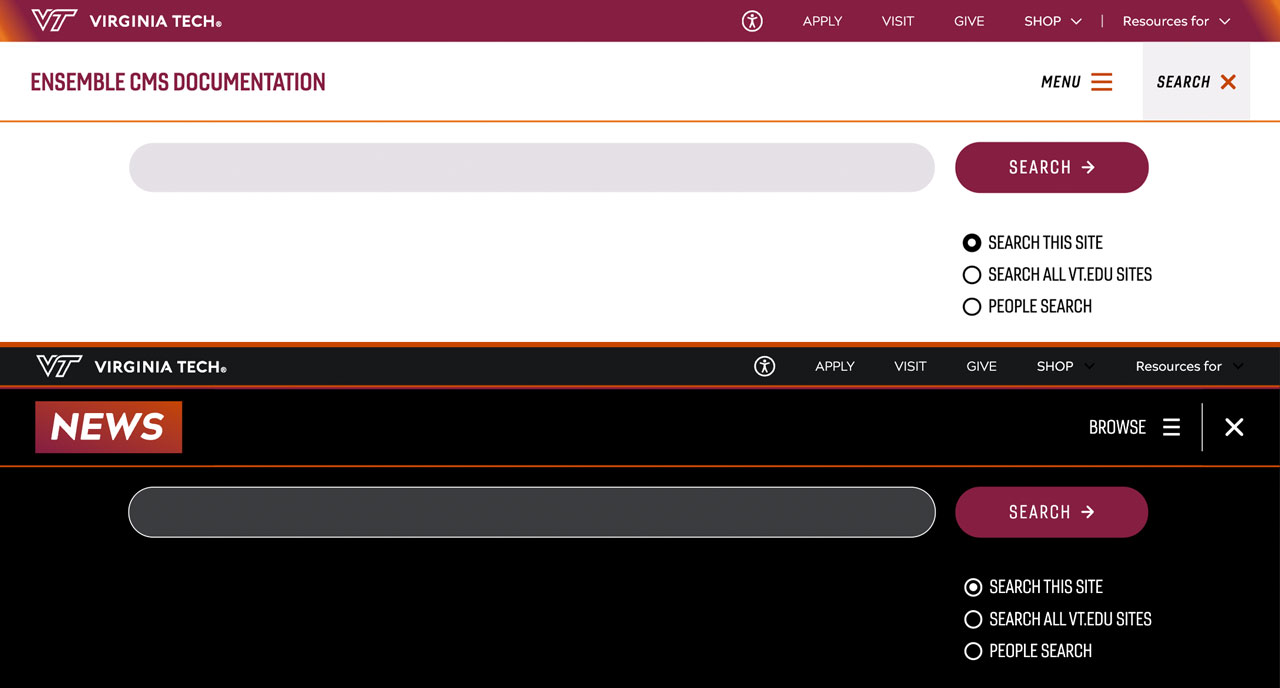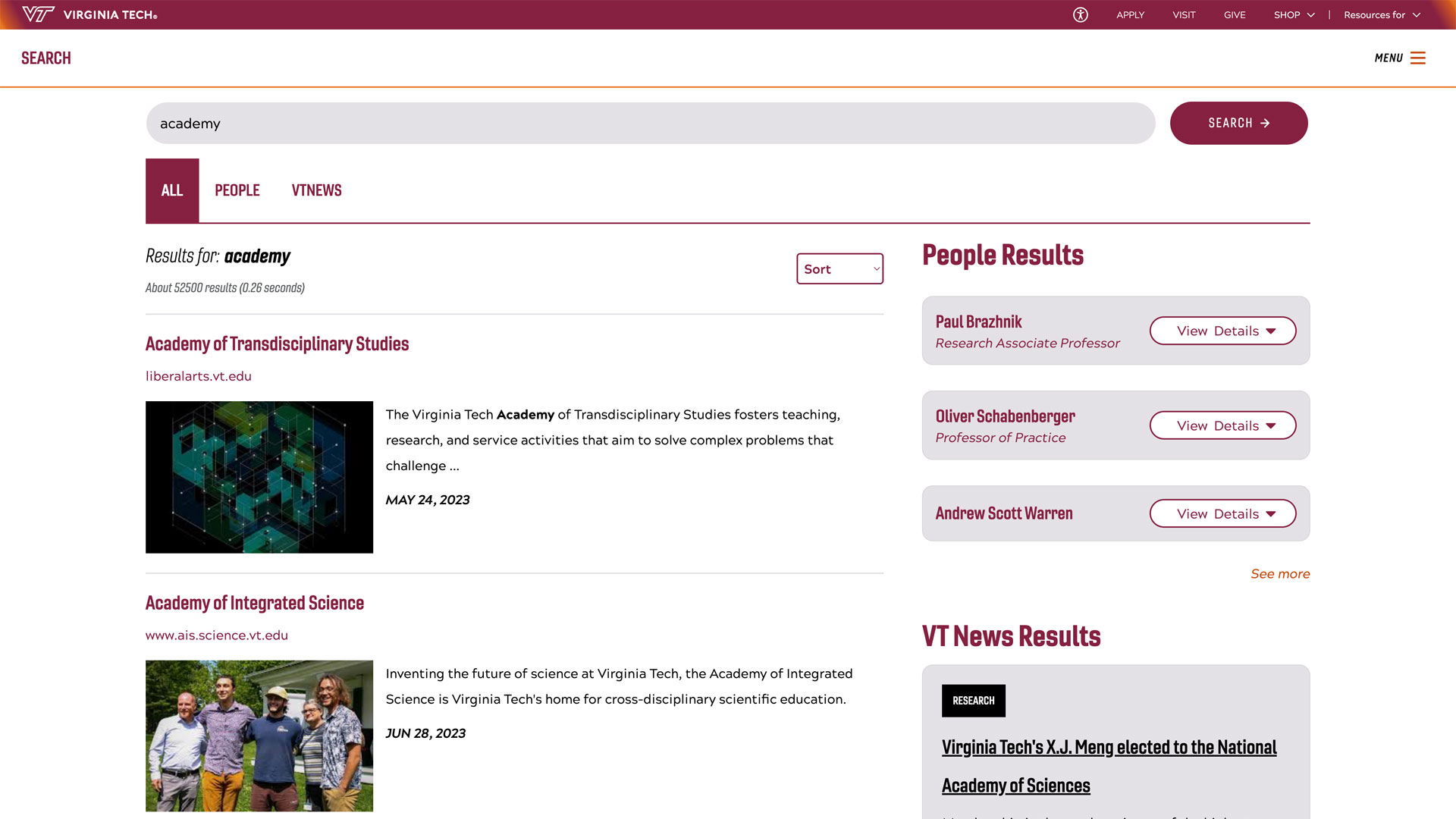Technology on the trail: Appalachian Trail managers say pervasive use of digital devices harms trail experience
In Virginia Tech research, trail managers reported that technology, specifically social media, has led to the trail’s degradation, overcrowding, and the spread of misinformation among hikers.

It’s the longest hiking-only path in the world.
The iconic Appalachian Trail passes through 14 states and stretches approximately 2,200 miles from Georgia to Maine. Each year, at least 3 million people hike parts of it or the whole trail. March marks the month that thousands set out on the journey.
But this historic trail is facing a modern challenge - the pervasive use of digital technology.
Armed with smartphones, smartwatches, iPads, and more, today’s Appalachian Trail hikers are more digitally connected than ever before. And research from Virginia Tech reveals that hikers’ connectivity with the internet makes trail management much more challenging than the days before mobile devices.
As trail resource managers grapple with these issues, Virginia Tech’s research findings, published in the Journal of Environmental Management, call for a balanced approach — one that harnesses technology’s benefits while preserving the trail’s natural and cultural integrity.
When going viral is harmful
The idea for this research, fueled by a grant from the National Science Foundation, started several years ago when Professor Shalini Misra, who leads the Public Interest Technology Lab in Arlington, decided to explore how or if people experience solitude in wilderness settings with digital devices. Misra studies the psychological and social impacts of digital technologies in a variety of settings.
The Appalachian Trail, with nearly a quarter of its total miles in Virginia, was the ideal research setting for this work, she said.
“We wanted to understand how digital technologies transform hikers’ wilderness experiences,” she said. “We also wanted to understand how trail managers perceive these changes and how they view the potential opportunities and challenges of digital technologies for sustainable trail management.”
The team, made up of of faculty and graduate students from the College of Liberal Arts and Human Sciences, the College of Engineering, and the College of Natural Resources and Environment, interviewed 18 Appalachian Trail resource managers over two years, in 2022 and 2023. The resource managers reported that technology, specifically social media, has led to the trail’s degradation, overcrowding, and the spread of misinformation among hikers.
Take the many scenic sites along the trail. When photos and videos are posted across social media channels, those sites often become hiker magnets.
Jeff Marion, a member of the research team, noted an example several years ago of Max Patch, a popular Appalachian Trail spot in North Carolina known for its 360-degree views. It was busting at the seams with campers to the mountain each weekend. The intense interest was attributed to a series of viral social media posts showcasing the mountain’s views, he said.
“Social media has the ability to go viral to places that don’t have the infrastructure to accommodate that use,” said Marion, a scientist and a retired adjunct instructor in the College of Natual Resources and Environment. Marion has section hiked the entire Appalachian Trail and wrote the book “Leave No Trace in the Outdoors,” a guide to principles for enjoying the outdoors without harming the environment.
In the team’s research article, a study participant said, “The Appalachian Trail is being loved to death.”
Trail visitor center staff describe regular demands from hikers wanting to know where a specific photo was taken so they can visit that exact spot. Such Instagram-popular locations include Virginia’s McAfee Knob, where there has been a spike in visitors in recent years, with up to 600 a day, according to the research article.
With an increase in trail foot traffic comes soil erosion, root exposure, littering, vandalism, and a host of other ecological problems, trail managers reported. Also, some hikers camp in illegal or inappropriate locations along the trail and then share that information through popular mobile hiking apps, such a FarOut.
Users of hiking apps read the information and camp in the same locations. Some trail stewards said they have contacted app managers to ask that inaccurate information is removed. But there is so much information across websites that it’s not easy for trail managers to respond to and monitor all of the reports, according to the research.
Additionally, management is reliant on a network of trail club volunteers who don’t have the financial or human resources for dedicated staff to respond to social media posts and generally manage incorrect information found online.

Solitude reimagined
But the rise of social media and digital technology isn’t all bad for the hiking community. The study points out that smartphones provide conveniences that hikers did not have before, from up-to-date access on weather conditions to information about nearby food sources. These conveniences can allow less experienced hikers to attempt long-distance hikes, Misra said.
Even so, Virginia Tech’s research explores these questions - Is today’s landscape truly a wilderness experience? And are mobile devices giving hikers a false sense of security?
Technology certainly has changed the concept of unplugging in nature, said Kris Wernstedt, professor emeritus of urban affairs at Virginia Tech and a member of the research team.
“Before technology, people chose to go into the woods and disappear for months at a time,” he said.
Now, some hikers seek what he called a “crowded or saturated solitude.”
He described the idea of a tramily, which is a network of friendships that some hikers form, both in–person and digitally, while on a trail.
“They are so connected with other people,” said Wernstedt, who has hiked half of the Appalachian Trail in sections. “It permeates the trail.”
Technology as a stewardship tool
The team’s research suggests several ways that trail resource managers can use digital information to their advantage. Ideas include creating online platforms for hikers and trail managers to communicate and connect and policy tools to regulate numbers of hikers in parts of the trail that are overused.
Still, there has to be a structure in place to keep up with the information.
“There’s a big potential to build that digital platform, but there needs to be someone who updates and maintains it, which is a significant barrier for the Appalachian Trail because it is managed through a cooperative management system and relies on volunteers,” Misra said.
The research also suggests establishing training protocols for trail staff and volunteers to use digital platforms and crowdsourced data so that it benefits hikers and managers.
One example of that is to have hikers become volunteer stewards, Marion said. Why not have hikers take photos of areas on the trail where they spot needed maintenance, such as downed trees, and send that information to trail managers?
Still, hikers should be willing to communicate with trail management in this way, and managers should have the organizational capacity to process and act on this information, Misra said.

Hearing from hikers
The research team also is interviewing hikers. In a pilot study, several faculty and students have traveled to various points along the Appalachian Trail and surveyed hikers about how they use technology on the trail.
Along with surveys, they are asking hikers to download an app, called Smart Trail, on which they answer questions over the course of 14 weeks about how often they use their mobile device on the trail and for what kinds of tasks. That may include texting, looking up navigational information, researching weather conditions, posting to social media, and more.
Earlier this month, several research team members, including students, Wernstedt, and Scott McCrickard, associate professor of computer science at Virginia Tech, traveled to the popular AT Gateways, a festival at Amicalola Falls State Park in Georgia. They talked with hikers there and encouraged them to download the app. The festival celebrates the start of the thru-hiking season.
Additionally, several graduate students who are part of the research team are scouring blogs and other websites to gauge the ways that thru hikers communicate online.
Wernstedt described this Appalachian Trail research as a microcosm of society. It represents questions surrounding technology use that are arising in many different areas of life, such as recent questions nationwide about cell phone use in schools.
Clearly, technology isn't going away, but understanding its challenges and opportunities is key to this research, Misra said.
"Designing technologies with organizational context and cultural values is critical," she said.




